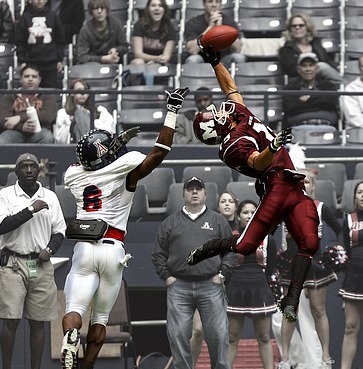What sport are you playing in the fall?
August 21, 2017 by Coach McCreary
Filed under Off-Season
Over the past couple decades, specializing in one sport (especially baseball) and playing it year-round has become a popular trend. It’s a horrible trend in my opinion and doctors, college coaches, and professional scouts agree.
Doctors are sounding the alarm because they are seeing more and more repetitive-motion injuries in young kids. These injuries were once only seen in college and pro athletes but now are rampant in elementary school aged kids. When I grew up, there was no such thing as fall baseball and indoor winter workouts. The day after my last baseball game of the summer is when the glove would be packed away and my soccer ball would come out. I’d switch to wrestling around November. It wasn’t until February that I would pick up a baseball again. Playing multiple sports gave my arm and baseball movements a 6-7 month break and strengthened other areas of my body. Soccer improved footwork and gained leg strength and endurance. Wrestling improved hand and wrist strength and demanded mental toughness and self-discipline on top of that. Injuries happened during the course of those activities too but not the repetitive-motion type doctors are seeing today.
College coaches are seeing the effects as well and many are not staying quiet about it. The ones I have spoken to have increasingly said that the players they see on the year-round circuit of games, AAU tournaments, and showcases are physical specimens to behold but have no idea how the game is played. They run good 60 yard times but have no idea when to go from 1st to 3rd in a real game. They show great power in BP but cannot (nor do they even try to!) hit behind the runner with a runner on second with no outs. In a conversation I had with a college coach about recruiting, he said he no longer recruits baseball players (meaning “year-round” baseball players). He recruits quarterbacks and defensive backs. He recruits soccer goalies. He recruits guards in basketball. He does this because those kids are typically well-rounded athletes who also have leadership skills. They also, by nature of those positions, usually have a good awareness of what is happening around them on the field or court. All these skills translate very well to the baseball field.
I also had a conversation recently with a very high-level amateur scout for a major league organization who literally travels the world evaluating talent. The topic of catchers came up and he said it has become almost impossible to effectively evaluate high school catchers because almost none of them call their own games anymore. Everything is so coach-driven that the intangibles of being a good catcher at the major league level – knowing what pitches to call in a given situation, the ability to handle an entire pitching staff, the in-game management of the pitcher, etc. – are completely foreign concepts to them and in turn, cannot be evaluated by scouts. Many have incredible physical skills and “show” very well in showcase events but don’t/can’t show what many scouts need to see in order to justify large signing bonuses. To look for those things, scouts (like my friend) try to look for it in other sports the prospect plays like football, basketball, etc. But of course, what if that kid doesn’t play another sport?
There is nothing wrong with doing a few baseball related activities year-round if you scale things back and manage it correctly. I also understand that some kids just don’t enjoy playing other sports. However, going full-tilt-baseball all the time is just asking for trouble.
It’s also starting to hurt some prospects in the scholarship and signing bonus areas as well.






Leave a Reply